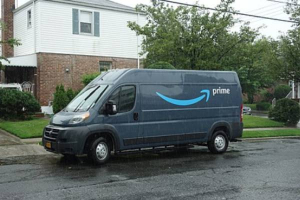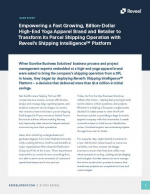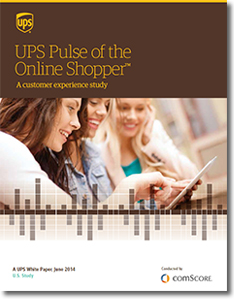Consumers Demand More Flexibility When Shopping Online
UPS Pulse of the Online Shopper™ - A customer experience study 2014 - Retailers must address buyers' complex path to purchase.
Online shoppers want retailers to make it easier to purchase their goods and services.
Consumers also want websites and stores to work better together.
For now, they also prefer to evaluate and purchase products from their desktops rather than their mobile devices, and when it comes to shipping and returns “free” is a driving factor to complete the sale.
comScore, a leader in measuring the digital world, and UPS, a global leader in logistics and transportation services, released these and other findings in the 3rd annual UPS Pulse of the Online Shopper Study.
Earlier this year, comScore asked 5,800 consumers about their online shopping experiences. Respondents said they want more options in searching for items, checking out, enhanced security and alternate delivery locations.
Mobile experience is lacking
While smartphones play a big role in the online experience, user interfaces have some catching up to do to win over consumers. Online shoppers who use multiple devices said they would prefer to shop on a desktop computer over mobile because larger and clearer images help them comparison shop. Therefore, it’s no surprise that when shopping on mobile devices, 41% of respondents said they prefer a retailer’s full website vs. a mobile website (34%) or mobile app (25%).
Social media influences sales
While retailers have had a hard time connecting social media to sales, the study clearly shows that it does have an impact as one-third of all shoppers and one-half of Millennials said purchase decisions are influenced by social media. Consumers also are likely to share their opinions on product and brands on social media. Satisfied shoppers who share their thoughts via social media are most likely to post on Facebook (86%) followed by Twitter (34%), Google + (23%), Pinterest (21%), and Instagram (19%).
Omnichannel drives brand loyalty
The demand for cross-channel convenience is becoming more prevalent for the savvy shopper. In fact, 40% of purchases are made crossing channels, whether searching in store and purchasing online or vice versa. “The retailers who embrace the various channels and options that customers favor will deliver a positive customer experience and ultimately drive sales and brand loyalty,” said Susan Engleson, senior director at comScore.
Delivery costs and free shipping trump faster delivery
Free shipping continues to drive purchasing decisions - 58% have added items to their shopping carts to qualify for free shipping and 83% are willing to wait an additional two days for delivery if shipping is free. More than one-half of online shoppers said they want to see the total purchase cost early in the checkout process, and the majority prefer seeing the expected arrival date rather than the number of days it will take for the product to arrive.
While consumers prefer most of their packages delivered to their home (74%), there is a growing trend for alternate delivery options. Only about 43% of shoppers in the survey were satisfied with the flexibility of changing delivery days or rerouting packages. “Consumers demand more from their package delivery experience, and today’s online shopper expects us to respond by creating solutions convenient for them. This is why we’ve created UPS My Choice and the UPS Access Point Network,” said Derrick Johnson, UPS vice president, global segments.
Return policies affect purchase decisions
Consumers now expect free returns with 82% respondents saying they would complete the purchase if they could return the item to a store or have free return shipping, and 66% said they view a retailer’s returns policy before making a purchase. The majority of shoppers want retailers to make it easy for them to return a purchase by including a label in the box.
What’s Related




Favorites





